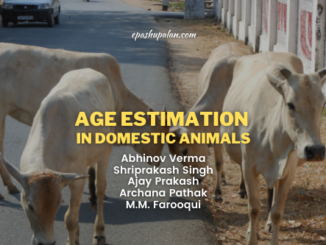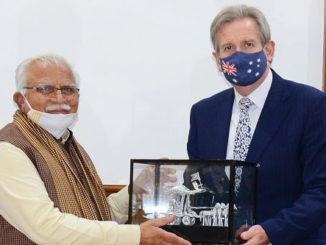Introduction
Poisonous gases of gas leaks not only endanger the life of human beings but also shows their disastrous effects on animals. Gas leaks may occur from industries, few household appliances etc.
Discussion
Recently on May 7th, 20202 a terrible STYRENE GAS LEAK occurred in the dawn of the day from a private plastic generating company of LG polymers in VISAKHAPATNAM, Andhra pradesh. It reportedly lead to the death and hospitalisation of many people and animals. Styrene is world’s 20th most used chemical according to WHO and has a residual effect in all the natural resources like air, water, soil etc., This deadly chemical claimed the life of 32 animals and nearly 200 animals were hospitalised and treated. But the death count of poultry and other birds was unclear as all the bird carcasses have not been found but was estimated to be very high.
In order to save their own lives, many people have abandoned their animals moved to safe places which was why most of animals and birds were not treated on time and were found dead on roads. Hearing loss, nervous symptoms, froth from the mouth, sperm damage, have been observed in animals exposed to styrene at high concentration levels. According to EPA, Animal studies have also shown that inhalation of styrene can cause damage to the liver and changes in the lining of the nose. The possible cause of death in animals and humans was identified as asphyxia – condition of oxygen deprivation. Apart from cattle, buffaloes, poultry and birds, many dogs, cats, reptiles were also affected and few were already dead by the time help reached them. Later the Scientific studies and research found that the short and the long-term effects of the gas on animals are very much similar to those on humans. However, the animals are more sensitive towards the gas than humans.
Similar case was observed 35yrs back in the one of the world’s worst industrial disaster – THE BHOPAL GAS TRAGEDY – due to leakage of chemical METHYL ISOCYANATE. On the night of this attack, about 2000 animals were killed and many were hospitalised. Large number of bloated animal carcasses were found by the rescue team and the impact of this gas leak continued till date even after 36 years.
As a result of the gas leak at the LG Polymers in Vizag a large number of companion and street animals have either died or were subjected to grave health issues. Because of the gas leak, dairy animals and other farmed animals were also abandoned by their owners. Such catastrophes bring immense harm upon the animals and puts a lot of pressure on local authorities and community organisations that wish to help.
Till now various efforts have been ongoing to rehabilitate the affected animals. Government departments such as the Animal Husbandry and Municipal Corporation do not have sufficient funds to handle the relief work that a disaster of this magnitude requires. There is no specific provision to supply food to the street animals. In these distressing times many NGOs are working closely with the government to provide the necessary help needed. Due to pandemics such as COVID-19 and the gas leak, many animals have been left on the streets without food and shelter. While human casualties have to be attended to and taken care, attending animals that are affected was found difficult due to absence of needed equipment and support. There are many animals needing immediate rehabilitation and care even now.
Conclusion
The events in Vizag and Bhopal revealed that expanding industrialization in developing countries without concurrent evolution in safety regulations could have severe catastrophic consequences. Local governments clearly cannot allow industrial facilities to be situated within urban areas, regardless of the evolution of land use over time. Industry and government need to bring proper financial support to local communities so they can provide medical and other necessary services to reduce morbidity, mortality and material loss in the case of industrial accidents. The Article 48(A) of the Constitution of India, which states that it is the duty of the state to protect and include the environment in its plans to safeguard the forest and wildlife of the country. Many NGO’s have requested NGT to include the Department of Animal Husbandry and the Society for Prevention of Cruelty in the 6-member committee formed to deal with incident by the Court and to direct the committee to include the animal casualties in its report so that appropriate monetary relief can be arranged for animals by the Government in case of vizag gas leak. The Society for Prevention of Cruelty to Animals is established under the Rule 3 of the Prevention of Cruelty to Animals (Establishment and Regulation of Societies for Prevention of Cruelty to Animals) Rules, 2001 with its main aim being ensuring animal welfare and implementation of animal welfare schemes in the established districts.
All these incidents indicates that there are many ticking bombs out there and vizag gas leak is just a tip of an iceberg. Hence precautionary measures must be taken in further prevention of these terrible situations mainly in the developing countries like India.






Excellent interpretation